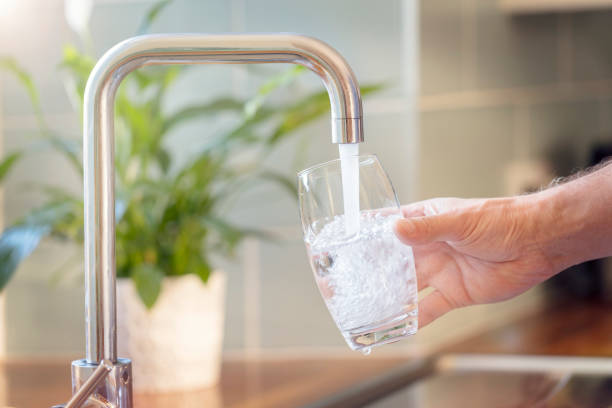Lindane

Lindane can gain access to water supplies through runoff after agricultural applications or it can volatilize and travel hundreds of miles by air. Safe Home offers a few kits that provide drinking water testing for lindane in city water and well water supplies.
Parameter Type: Drinking Water Testing for Volatiles
Parameter Name:Lindane
What it is and Where it Comes From:
Lindane is an insecticide, also known as gamma-hexachlorocyclohexane (γ HCH), gammaxene, Gammallin and sometimes incorrectly called benzene hexachloride (BHC). It is an organochlorine chemical and an isomer of hexachlorocyclohexane that has been used both as an agricultural insecticide and as a pharmaceutical treatment for lice and scabies. Over time, lindane is broken down in soil, sediment, and water into less harmful substances by algae, fungi, and bacteria; however, the process is relatively slow and dependent on ambient environmental conditions. When lindane is used in agriculture, an estimated 12–30% of it volatilizes into the atmosphere, where it is subject to long-range transport and can be deposited by rainfall. Lindane in soil can leach to surface and even ground water and can bioaccumulate in the food chain. Drinking water testing gives you several benefits like peace of mind, identifying contaminants in your water, and insight into health concerns. Safe Home offers Laboratory drinking water testing kits for lindane, allowing you to collect your water sample and ship it directly to our EPA-Certified Laboratory. This platform of drinking water testing for lindane will give you an accurate level based on the lowest level of a parameter our instruments can detect (Method Detection Level). Safe Home drinking water testing for semi-volatiles can be used for city and well water supplies. Drinking water testing should be done any time you notice a significant change in your water quality.
Health Effects:
In humans, lindane affects the nervous system, liver, and kidneys, and may well be a carcinogen. Whether lindane is an endocrine disruptor is unclear. Exposure to large amounts of lindane can harm the nervous system, producing a range of symptoms from headache and dizziness to seizures, convulsions, and more rarely, death. Lindane has not been shown to affect the immune system in humans, and it is not considered to be genotoxic. Prenatal exposure has been associated with altered thyroid hormone levels and could affect brain development.
Solutions to Contaminant Levels:
What are the next steps after drinking water testing? You can remove lindane from your drinking water to below the EPA’s MCL of 200 ppt with granular activated carbon (GAC) in water filter systems. With a reliable and effective water filtration unit, you can eliminate the chemical from your tap water. A filter with granular activated carbon (GAC) is a proven option to remove certain chemicals, particularly organic chemicals, from water. Activated carbon is a porous material that removes organic compounds from liquids and gases by a process known as “adsorption.” In adsorption, organic molecules contained in a liquid or gas are attracted and bound to the surface of the pores of the activated carbon as the liquid or gas is passed through. Adsorption occurs on the internal surface of activated carbon, termed the adsorbent. During adsorption, liquids or gases pass through the highly porous structure of the activated carbon. The compound(s) to be removed, termed the adsorbate(s), diffuses to the surface of the adsorbent, and is retained because of attractive forces. The primary raw material used in the production of our activated carbons is bituminous coal that is crushed, sized, and processed in low temperature bakers followed by high-temperature activation furnaces. Activation develops the pore structure of the carbon. Through adjustments in the activation process, differentiated pores for a particular purification application are developed. Who do I need to contact to find out more information about water quality in my area? Every community water supplier must provide an annual report to its customers, known as a Consumer Confidence Report (CCR). The report provides information on your local drinking water quality, including the water’s source, contaminants found in the water, and how consumers can get involved in protecting drinking water. How often does the local public water system preform drinking water testing? Frequency of drinking water testing depends on the number of people served, the type of water source, and types of contaminants. Certain contaminants are tested more frequently than others, as established by the Safe Drinking Water Act. You can find out about levels of regulated contaminants in your treated water for the previous calendar year in your annual Consumer Confidence Report (CCR).


